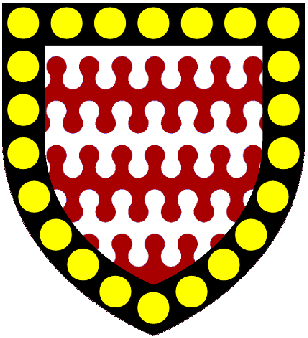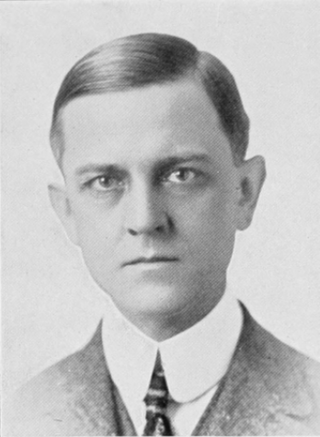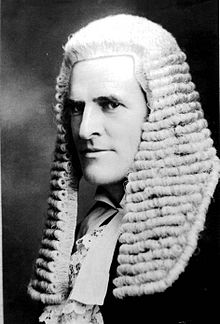
Henry Thomas Colebrooke FRS FRSE FLS was an English orientalist and botanist. He has been described as "the first great Sanskrit scholar in Europe".

Earl of Ducie is a title in the Peerage of the United Kingdom. It was created in 1837 for Thomas Reynolds Moreton, 4th Baron Ducie.
Captain John Lyons, was a British politician and a Captain in the Royal Navy, who owned extensive sugar plantations, of 563 acres in total, in Antigua. He married Catherine Walrond, the daughter of the 5th Marquis de Vallado and Sarah Lyons (1731-1764). John and Catherine Lyons had 15 children, including Edmund Lyons, 1st Baron Lyons. John's grandchildren included Richard Lyons, 1st Viscount Lyons, the diplomat who solved the Trent Affair, Sir Algernon McLennan Lyons, Admiral of the Fleet, and Richard Lyons Pearson, Assistant Commissioner of the Metropolitan Police.

Bisley is a village and former civil parish, now in the parish of Bisley-with-Lypiatt, in the Stroud district, in Gloucestershire, England, about 4 miles (6 km) east of Stroud. The once-extensive manor included Stroud and Chalford, Thrupp, Oakridge, Bussage, Througham and Eastcombe. In 1891 the parish had a population of 5171.

Henry John Elwes, FRS was a British botanist, entomologist, author, lepidopterist, collector and traveller who became renowned for collecting specimens of lilies during trips to the Himalaya and Korea. He was one of the first group of 60 people to receive the Victoria Medal of the Royal Horticultural Society in 1897. Author of Monograph of the Genus Lilium (1880), and The Trees of Great Britain & Ireland (1906–1913) with Augustine Henry, as well as numerous articles, he left a collection of 30,000 butterfly specimens to the Natural History Museum, including 11,370 specimens of Palaearctic butterflies.

Sir William de Shareshull KB (1289/1290–1370) was an English lawyer and Chief Justice of the King's Bench from 26 October 1350 to 5 July 1361. He achieved prominence under the administration of Edward III of England.

The Reverend John Lightfoot was an English parson-naturalist, spending much of his free time as a conchologist and botanist. He was a systematic and effective curator of the private museum of Margaret Bentinck, Duchess of Portland. He is best known for his Flora Scotica which pioneered the scientific study of the plants and fungi of Scotland. He was elected a Fellow of the Royal Society for his scientific work.
He was an excellent scholar in many branches of literature; but after the study of his profession, he addicted himself chiefly to that of botany and conchyliologie [sic]. He excelled in both.

Francis Lord Charlton Hodson, Baron Hodson,, also known as Charles Hodson, was a British judge who served as Lord of Appeal in Ordinary from 1960 to 1971.

Robert Worth Bingham was an American politician, judge, newspaper publisher and the United States Ambassador to the United Kingdom from 1933 to 1937.

Sir George Nayler, KH FRS was a long-serving officer of arms at the College of Arms in London.

Sir Thomas Coningsby was an English soldier and Member of Parliament, notable for his diary of military action in France in 1591, and his feuds over local representation in Herefordshire.
Bruce Woodcock was an English light heavyweight and heavyweight boxer from Doncaster. He held the British and Empire heavyweight titles from 1945 to 1950, and was the European heavyweight champion 1946–1949. He fought unsuccessfully for a World title in 1950.

Lypiatt Park is a medieval and Tudor manor house with notable nineteenth-century additions in the parish of Bisley, near Stroud, in Gloucestershire, England. The grounds include a fine group of medieval outbuildings. It is a Grade I listed building.

Colonel Sir Robert Nigel Fitzhardinge Kingscote was a British soldier, Liberal politician, courtier and agriculturalist. He was generally known as Sir Nigel Kingscote.

Herbert Charles Woodcock was a British businessman and Conservative Party politician.
Robert Tracy (1655–1735) was an English judge.
Harold Frederick Comber ALS was an English horticulturist and plant collector who was to specialise in the study of lilies Lilium sp. The eldest child of three, and only son of James and Ethel Comber, he was born at Nymans, Staplefield, Sussex, where his father was Head Gardener. He was educated at Handcross Council School until aged 12, when he entered Ardingly College for two years. He did not excel academically, failing his Oxford Local examinations, but was noted for his keen powers of observation and a retentive memory.

Richard Oliver (1735–1784) was a British merchant, plantation owner and politician who sat in the House of Commons from 1770 to 1780.
Colonel Maynard Colchester, of Westbury Court and the Wilderness, was an English lawyer and politician who sat in the English and British House of Commons from 1701 to 1708.
Thomas de Grenier de Fonblanque, KH, was a British diplomat, Her Britannic Majesty's Consul General and Consul-General to Serbia.














